- Home
- Carl Sagan
Comet Page 20
Comet Read online
Page 20
Schematic representation of the Oort cometary cloud surrounding the Sun. Only a tiny fraction of the trillion comets in the outer Oort Cloud are shown, most of them lying about one-third of the way between the Sun and the nearest star. Much farther in toward the Sun is the probably still more numerous cometary population of the inner Oort Cloud. Painting by Jon Lemberg.
We may therefore take something like one hundred thousand times the Earth’s distance from the Sun as a limit for the average major axis of a comet’s orbit, giving a period of about ten million years. Since we see about three comets of long period per year and we may miss several, there may be (say) fifty million comets.
—HERBERT HALL TURNER, SAVILIAN PROFESSOR OF ASTRONOMY,
OXFORD UNIVERSITY, AT A FRIDAY EVENING DISCOURSE, THE ROYAL
INSTITUTION, LONDON, FRIDAY, FEBRUARY 18, 1910
This calculation ignores comets which do not enter the inner solar system. But it does indicate that many of the ideas central to the Oort Cloud hypothesis had been in the air for decades, indeed for centuries. Halley, in his 1705 paper, had noted that “the space between the Sun and the fix’d Stars is so immense that there is Room enough” for many comets of long period.
In addition to nearby stars, today we also know that large clouds of interstellar molecules exist in our part of the Galaxy, and the solar system should plow through or by a few of them every billion years. Each time this happens, there will be an additional gravitational stirring within the circumsolar cometary halo, and a further flurry of comets will be sent into the inner solar system. Oort deduced a vast reservoir of comets in deep freeze and mint condition. How vast? The eighteenth-century German astronomer Johann Heinrich Lambert argued that the space around the Sun was probably filled with as many comets as could be squeezed in without frequent collision, and from this deduced that there were “at least 500 millions of comets” in the solar system. With the present size of the Oort Cloud and with the present rate of gravitational perturbation from passing stars, astronomers deduce at least a trillion cometary nuclei. The number of comets in the Oort Cloud is thus larger than the number of stars in the Milky Way Galaxy. However, this estimate is almost certainly too modest. A still larger number of comets seems likely. Recent evidence supports the idea that the Oort Cloud stretches from its periphery near 100,000 A.U. from the Sun continuously inward, reaching almost to the orbit of Pluto.
Such comets are too far out for encounters with the planets to change their orbits, and too close in for the usual passing stars or interstellar clouds to perturb them. But once in a geological age, a star will come much closer to the Sun, actually passing within the boundaries of the Oort Cloud. If there is an inner Oort Cloud, a very close stellar encounter can produce a major disruption, scattering a billion comets at once, and showering the inner solar system with comets at a rate of about one an hour for a million years. If we allow for the inner Oort Cloud, we find that the total number of comets orbiting the Sun may be 100 trillion. This is roughly the same as the number of stars in a hundred thousand galaxies like ours. The comets constitute a small universe.
These numbers, even the mere trillion comets in the outer cloud, are so staggering that they invite disbelief. “The chief difficulty about this hypothesis,” wrote a highly respected American astronomer known for his openness to new ideas, “is that it demands the existence of an enormous number of comets of large perihelion distance.” Well, exactly.
What is the scale of the classical Oort Cloud? A hundred thousand A.U. is a little less than two light-years, roughly halfway between the Sun and the nearest star. If we were standing on the comet, we would be so far from the Sun that we would see it as it was almost two years ago. The typical period for a comet in the Oort Cloud to circle the Sun is a few million years. Since the age of the solar system is about 4.6 billion years, a typical such comet has made a thousand revolutions of the Sun. A year on the comet is a million times longer than a year on the Earth, and out there the words of the Psalmist are almost literally correct: “For a thousand years in Thy sight are but as yesterday when it is past, and as a watch in the night.”*
With a trillion or more comets in the Oort Cloud, you might think that comets are closer together there than anywhere else in the solar system—perhaps huddling together, far from the Sun, like one of Doré’s illustrations of the souls of the dead. But the number of comets is more than balanced by the immensity of the space they occupy, and the typical distance from one comet to another out there is about 20 A.U., roughly the same as the distance from the Earth to the planet Uranus. The greatest concentration of comets in the solar system happens, it seems, to be in the very innermost parts, where by lucky chance we happen to live. The three or four long-period comets that each year are passing through together with all the short-period comets comprise, so far as we know, the greatest density of comets anywhere between here and the nearest star system, Alpha Centauri.
The Voyager 2 spacecraft was launched in 1977 on an unusual high energy trajectory so that it would reach the planet Uranus in 1986 and Neptune in 1989. If our present spacecraft could get out to the Oort Cloud, it would take us a decade or more to fly from comet to comet. But we cannot soon get to the Oort Cloud. The Voyager spacecraft—the fastest ever launched by the human species—took nine years to go from Earth to Uranus; it will take them 10,000 years to reach the main comet repository. The comets themselves take a few million years to fall from the solar system frontiers to the vicinity of the Earth. The main part of the Oort Cloud is very far away.
Altogether, how much do a trillion comets weigh? If every one of them is about a kilometer across, then the total mass of all the comets in the outer Oort Cloud is about the same as the present mass of the Earth. Put another way, if you took the Earth and divided it up into little kilometer-sized chunks, you would have in numbers and size (but not in composition) some approximation of the current population of the outer Oort Cloud. If, as seems likely, the typical comet is a little bigger, or if you include the inner Oort Cloud, then the total mass of the cloud will be considerably more.
The short-period comets tend to orbit the Sun in the same plane as the planets, in the ecliptic or zodiacal plane. They also tend to go around the Sun in the same direction as the other planets. The long-period comets, on the other hand, show a chaotic mix of every orbital inclination, and are as likely to be going around the Sun clockwise as counterclockwise. Newton thought that the chaos of the long-period comets was to be expected in a universe in which only gravitation was calling the shots; while the orderly regularity of the short-period comets was a sign of divine intervention at the Beginning. But Laplace showed (Chapter 5) that the orbital characteristics of long-period comets could be transformed into those of short-period comets during gravitational capture by Jupiter, and religious opinion changed. As late as 1835 a lecturer at The Royal Institution was able to conclude that the orbital inclinations and eccentricities of comets do “not depend upon physical laws, but upon the will of the Creator.” However, the will of the Creator may be difficult for mere humans to recognize.
Oort argued that no matter what the original inclinations of the cometary orbits in the Oort Cloud, stellar perturbations were more than adequate to redistribute the orbital planes. Even if all the comets in the Oort Cloud were once in the same plane as the planets, by now passing stars would have randomized the inclinations—also producing an equal number of long-period comets in retrograde as in prograde revolution. Any information on the original distribution of cometary orbits has by now been lost through multiple stellar encounters. From order, chaos.
A typical comet in the Oort Cloud has existed for billions of years at a temperature only a few degrees above absolute zero. There are no collisions, no heating of the comet, no outgassing. It is very quiet in the Oort Cloud. There is a flux of galactic cosmic rays which slowly intrudes into the top meter or two of the comet. Each cosmic ray leaves a trail of broken chemical bonds behind it. As the fragments slowly reassem
ble themselves in the frigid and solid surface, new molecules are generated. If there is initial methane or carbon monoxide ice, the net result over the age of the solar system will be the generation of a considerable abundance of complex organic molecules, but only in the outer shell of the comet. If you took a very slow stop-motion film of the cometary surface (one frame every million years, say), the ices would slowly become darker and redder due to the complex organic molecules being synthesized. Suppose the comet then is nudged into the inner solar system. During a single perihelion passage, all of the processed ices would be vaporized to space—the work of a billion years undone in a month. The underlying ices revealed after the blow-off of the top meter will be close to their pristine form—pure white ice, if that is how the comet formed—or with a reddish primordial taint from the organic molecules of the interstellar medium that went into the comet in the first place. In any case, under the thin surface layer worked by cosmic rays is material virtually untouched since the beginning of the solar system.
Initially ordered cometary orbits are made random by the gravitational influence of passing stars (or interstellar clouds). The central luminosity is of course the Sun. The plane is the ecliptic or zodiacal plane in which lie the orbits of the planets and the short-period comets. Imagine (upper left) that comets in the Oort Cloud and long-period comets were originally restricted to this plane. As, through the age of the solar system (top right, bottom left), stars pass by, the cometary orbits are lifted out of the plane, until (lower right) the cometary orbits have random inclinations and are more likely to be out of the plane than in it. The gravitational influence of these passing stars serves also to propel an occasional comet from the Oort Cloud into the inner solar system. Diagram by Jon Lomberg/BPS.
An early view of the connection between comets and the Milky Way Galaxy. This cartoon by Olaf Gulbransson shows the chief of police of Berlin—who had lately suppressed public demonstrations with excessive force—admonishing Halley’s Comet for traveling through the Milky Way. The Milky Way (“Milk Street” in German), he scolds, is no place for a demonstration. From Simplicissimus, April 4, 1910. Courtesy Ruth S. Freitag, Library of Congress.
Why is the outer boundary of the Oort Cloud a hundred thousand Astronomical Units away? Does the population of comets in the Oort Cloud fall off slowly thereafter, perhaps bumping into the Oort Cloud of some other star? We might imagine the two cometary halos inter-digitating, interpenetrating—the individual comets mingling, but widely separated—while remaining loyal to the stars around which they were born. Eventually, they pass on. But we now know that the Oort Cloud cannot extend very far beyond a hundred thousand A.U. The Russian astrophysicist G. A. Chebotarev has shown that the massive center of the Milky Way Galaxy, thirty thousand light years from the Earth and Sun, is adequate to loosen the feeble gravitational grip of the Sun on any comet more distant than about two hundred thousand A.U. A small part of the mass of the center of the Galaxy is probably provided by a black hole that resides there. Without the black hole, the Oort Cloud would be slightly bigger.
Thus the Oort Cloud connects familiar events in this backwater of the inner solar system not only with the nearby stars but also with the center of the Galaxy, so far away that, through the telescope, we see it as it was 30,000 years ago. The comets that rush into our part of the solar system are from a skittish population made excitable by the passage of stars and nebulae. If the solar system were isolated from the rest of the Galaxy, we would never know that comets exist—because then the passing stars and interstellar clouds would be unavailable to shake the Oort Cloud occasionally and send some comets fluttering into the inner solar system.
And the number of comets that arrive down here (as well as the external boundaries of the Oort Cloud from which they come) may be determined in some measure by a black hole at the galactic center—an object undreamt of only a few decades ago. The comets are unexpectedly and profoundly connected with the Milky Way, a conclusion appropriate enough for Jan Oort, who perhaps more than any other person in the twentieth century has revolutionized our knowledge of the Galaxy.
The scope of Oort’s idea is remarkable. To account for the handful of new comets that appear in our skies each year, a vast mind-numbing multitude of invisible comets living far beyond the orbit of Pluto is postulated. The idea explains what we know about comets in an elegant way that no other theory even approaches. The trillions of comets are now widely accepted by astronomers all over the world and called, properly, the Oort Cloud. Many scientific papers are written each year about the Oort Cloud, its properties, its origin, its evolution. Yet there is not yet a shred of direct observational evidence for its existence. We are not yet able to poke around in the Oort Cloud. No spacecraft has voyaged to count the comets there. It will be quite a while before any do. There is one recent measurement that might conceivably be relevant, the discovery of distant wispy aggregations of matter by the Infrared Astronomy Satellite (IRAS); the contention that this is the structure of the Oort Cloud is, however, wildly controversial.
But with the refinement of our scientific instruments, and the development of space missions to go far beyond Pluto, our chances of observing Oort Cloud comets will improve. There will be some day in the future of our species—provided we are not so foolish as to destroy ourselves first—when we will directly measure the population of the Oort Cloud, designate and characterize each of the large comets there, plot their orbits into the future, and perhaps make plans for their utilization. We do not know how long it will be until some representation of the Oort Cloud like that on this page will be accumulated from real data. We wish the astronomers of that distant epoch well, and in our mind’s eye share with them the joy that they will surely take in those great discoveries to come.
*That the stars have a proper motion was first demonstrated by the ubiquitous Mr. Halley.
*The star would drill a hole through the Oort Cloud about 1,000 A.U. across that would gradually be repaired.
*365 days/year × 1000 years = 365,000: 1, crudely 1,000,000:1.
CHAPTER 12
Mementos of Creation
Out of whose womb came the ice?
—JOB 38:29
It often happens that comets arise. These … are not any of the stars that were made in the beginning, but are formed at the same time by Divine command and again dissolved.
—JOHN OF DAMASCUS, EXACT EXPOSITION OF
THE ORTHODOX FAITH, EIGHTH CENTURY
Humans woke up one morning, looked around, and discovered that our star, the Sun, has a retinue of other worlds. Not one of them is just like the Earth. The inner, nearby, so-called terrestrial planets (Mercury, Venus, Earth, and Mars) travel on nearly circular orbits in the same direction around the Sun as the Sun’s own rotation.* They have thin atmospheres. Their silicate mantles conceal metal cores.
Beyond them are the asteroids, thousands of small airless irregular objects—some rocky, some metallic, and some rich in dark, complex organic matter. The biggest are hundreds of kilometers across, but many more are a kilometer in size or smaller. They also move in prograde motion around the Sun, closely confined to the plane within which all the other planets perform their circumnavigations. Most of the asteroids are in nearly circular orbits between the paths of Mars and Jupiter. A few have more elliptical orbits that carry them inside the orbits of Mars, the Earth, Venus, or even Mercury. Some of them approach the Earth and are called Near-Earth Objects (NEOs).
Farther out are the giant gas planets, Jupiter, Saturn, Uranus, and Neptune, made mostly of hydrogen and helium, but with smaller amounts of water, ammonia, and methane. They vary in mass from about 15 to about 300 Earths, and appear to have small interior cores of rock and metal. Orbiting these so-called jovian planets are dozens of moons—each constructed from some different proportion of rock, ice, and organics.
In this realm and far beyond are trillions of icy comets, most of them in somewhat elliptical orbits enormously distant from the planets; half are in pr
ograde revolution, half in retrograde. Their orbits are at random inclinations. A much smaller number of comets have highly eccentric orbits that take them near the inner terrestrial planets, where still fewer short-period comets can be found. Almost all of them are orbiting in a prograde direction and fairly close to the ecliptic plane. Now where did this profusion of worlds come from? Why the regularities in their motions?
On first hearing where babies come from, many of us express a certain skepticism. Often what is being described does not correspond to the listeners’ own observations. Compared to storks, angels, and cabbage patches, the machinery seems unwieldy and improbable. But no matter how implausible the story may seem at first, there is a reasonable consensus among knowledgeable individuals on the matter. Direct experience eventually converts even the most committed skeptic.
In the study of cometary or planetary origins, exotic processes over immense distances and in remote epochs are routinely invoked. If we are skeptical of an astronomical theory of our origins, we cannot poll the opinions of reliable astronomers on nearby worlds. There is no one to tell us the cosmic version of the birds and the bees. We must figure it out for ourselves. Astronomers have a potential advantage, though: if they are curious about the stars, they can examine billions of them. Even a very unlikely process can be witnessed if enough cases are examined. Failing that, astronomers are reduced to the fundamentals—what is already known about the universe, and the principles of physics.
Something like the modern view of the origin of the solar system was first proposed by two extraordinary thinkers whom we have met already in these pages—Immanuel Kant and Pierre Simon, Marquis de Laplace. They had a distinct advantage over their predecessors: In the eighteenth century, observational astronomy was making remarkable progress. Kant and Laplace were intrigued by the structure of the tings of Saturn as had been revealed through the discoveries of Galileo, Huygens, and their successors. Here was a planet with a flat disk of particles surrounding it in its equatorial plane. Did the Sun once have a much larger ring system, from which the planets somehow condensed?

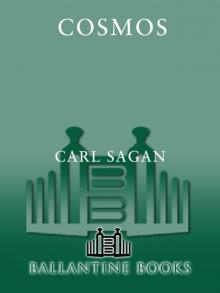 Cosmos
Cosmos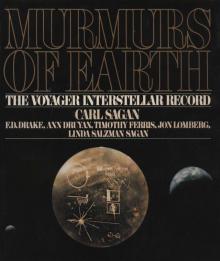 Murmurs of Earth
Murmurs of Earth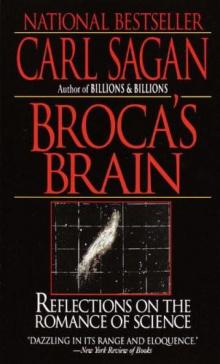 Broca's Brain
Broca's Brain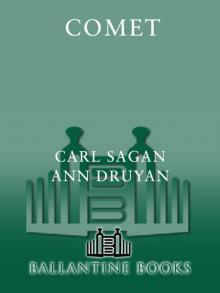 Comet
Comet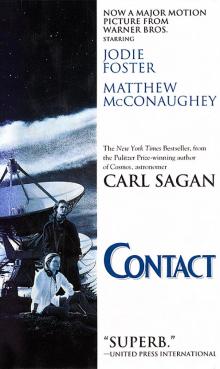 Contact
Contact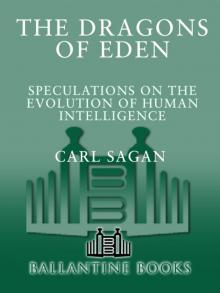 Dragons of Eden
Dragons of Eden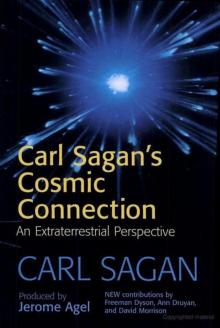 Cosmic Connection
Cosmic Connection Shadows of Forgotten Ancestors
Shadows of Forgotten Ancestors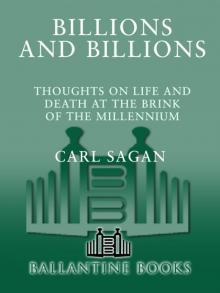 Billions & Billions
Billions & Billions Comet, Revised
Comet, Revised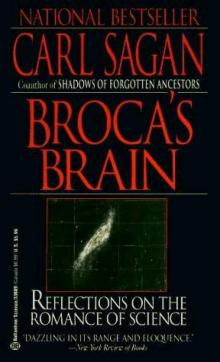 Broca's Brain: The Romance of Science
Broca's Brain: The Romance of Science The Varieties of Scientific Experience: A Personal View of the Search for God
The Varieties of Scientific Experience: A Personal View of the Search for God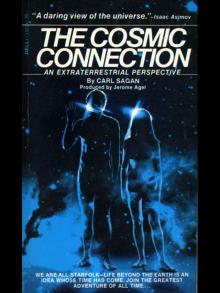 The Cosmic Connection
The Cosmic Connection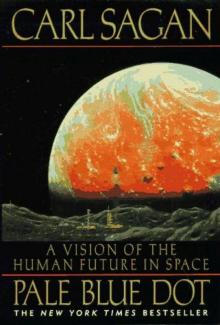 Pale Blue Dot: A Vision of the Human Future in Space
Pale Blue Dot: A Vision of the Human Future in Space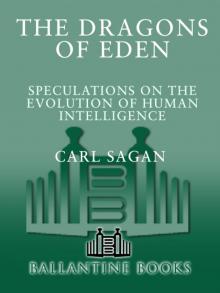 The Dragons of Eden
The Dragons of Eden